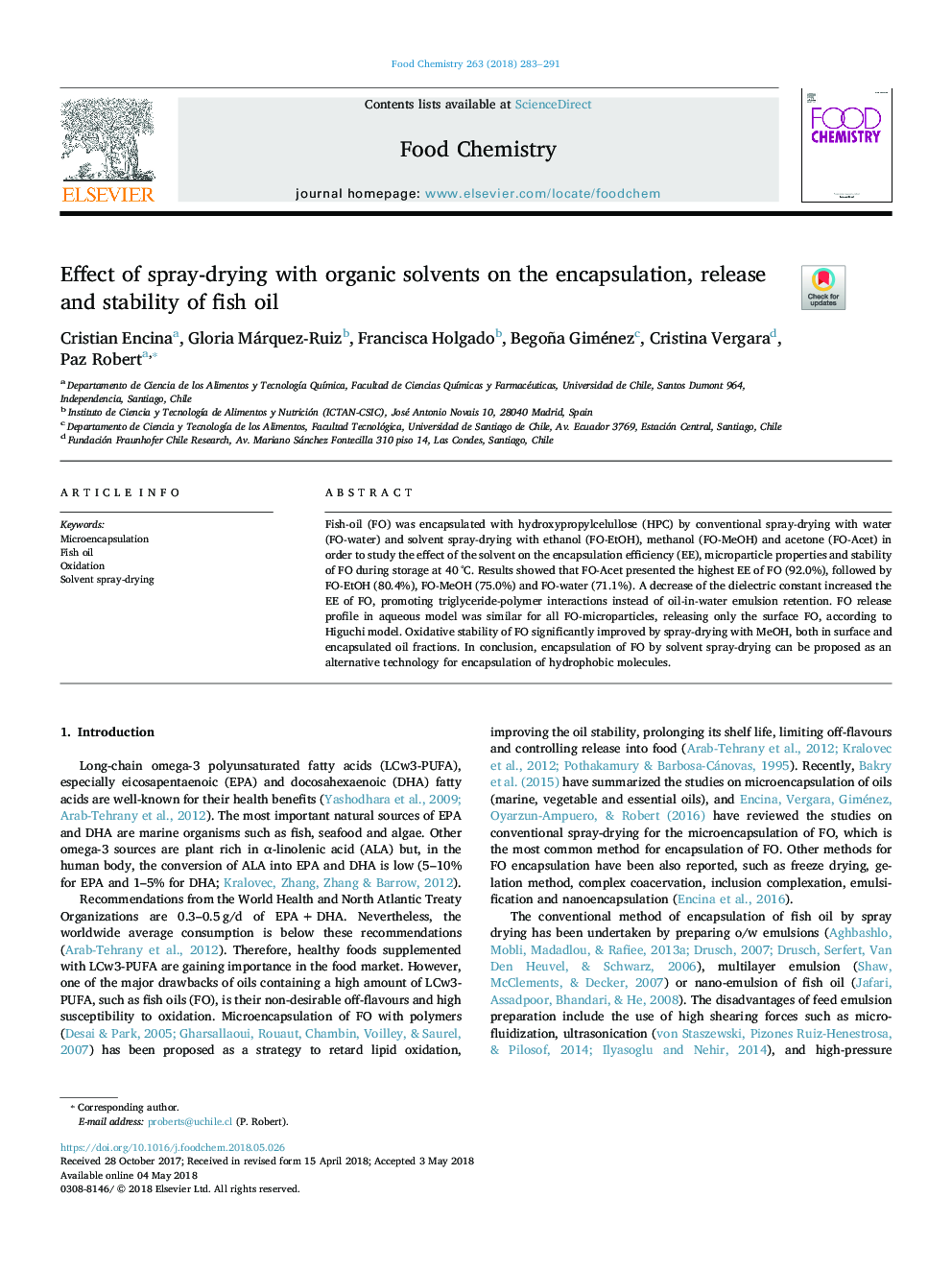| Article ID | Journal | Published Year | Pages | File Type |
|---|---|---|---|---|
| 7584773 | Food Chemistry | 2018 | 9 Pages |
Abstract
Fish-oil (FO) was encapsulated with hydroxypropylcelullose (HPC) by conventional spray-drying with water (FO-water) and solvent spray-drying with ethanol (FO-EtOH), methanol (FO-MeOH) and acetone (FO-Acet) in order to study the effect of the solvent on the encapsulation efficiency (EE), microparticle properties and stability of FO during storage at 40â¯Â°C. Results showed that FO-Acet presented the highest EE of FO (92.0%), followed by FO-EtOH (80.4%), FO-MeOH (75.0%) and FO-water (71.1%). A decrease of the dielectric constant increased the EE of FO, promoting triglyceride-polymer interactions instead of oil-in-water emulsion retention. FO release profile in aqueous model was similar for all FO-microparticles, releasing only the surface FO, according to Higuchi model. Oxidative stability of FO significantly improved by spray-drying with MeOH, both in surface and encapsulated oil fractions. In conclusion, encapsulation of FO by solvent spray-drying can be proposed as an alternative technology for encapsulation of hydrophobic molecules.
Keywords
Related Topics
Physical Sciences and Engineering
Chemistry
Analytical Chemistry
Authors
Cristian Encina, Gloria Márquez-Ruiz, Francisca Holgado, Begoña Giménez, Cristina Vergara, Paz Robert,
